As marketing analytics moves into 2025, it’s no longer about understanding the past; rather, it’s about predicting the future in real-time. With further developments in artificial intelligence (AI), real-time processing of data, and privacy-first innovations, marketing analytics is set to change how businesses will interact with their customers.
The global big data and analytics industry is expected to grow significantly in the next few years at a CAGR of 14.9% between 2024 and 2032 and reach $1.088 trillion by 2032.
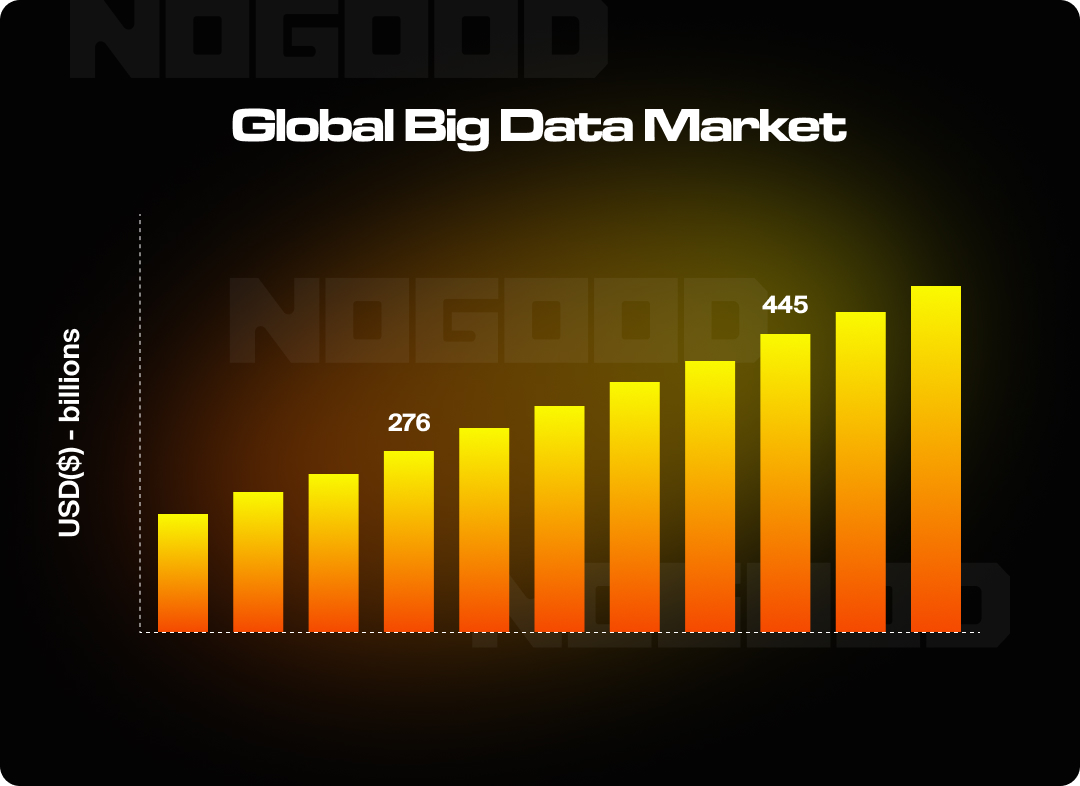
Staying ahead of the market in analytics trends has increasingly become an absolute necessity. Considering that global spending on Digital Transformation will reach US$3.9 trillion by 2027, the way businesses handle the analytics infrastructure will definitely see a change.
To date, organizations have attempted the sweeping, one-off overhauling of their analytics systems, with far too many resulting in cost overruns, missed deadlines, and solutions that were obsolete before implementation even finished. In 2025, businesses will be forced to adopt an iterative approach, especially when it comes to marketing analytics.
According to Karl Bagci, the Head of Information Security at Exclaimer, only by breaking down analytics transformations into smaller, manageable projects can companies keep optimizing their setups continuously. This means regular upgrading of data pipelines, integrating advanced tools like AI-driven predictive analytics, and refining attribution models to ensure adaptability.
Customer expectations only continue to rise, while their behaviors continue to evolve; businesses need not only to keep pace but also to actively anticipate such change. Brands can’t rely on static or outdated analytics strategies as digital ecosystems grow increasingly complex.
The ability to adapt quickly – by leveraging advanced tools and innovative methodologies – has become the difference between falling behind and staying ahead. Setting the stage for a period of radical change in marketing analytics, agility and creativity are going to be the transformative keys toward thriving in 2025 and beyond.
1. AI and Machine Learning Will Change the Game
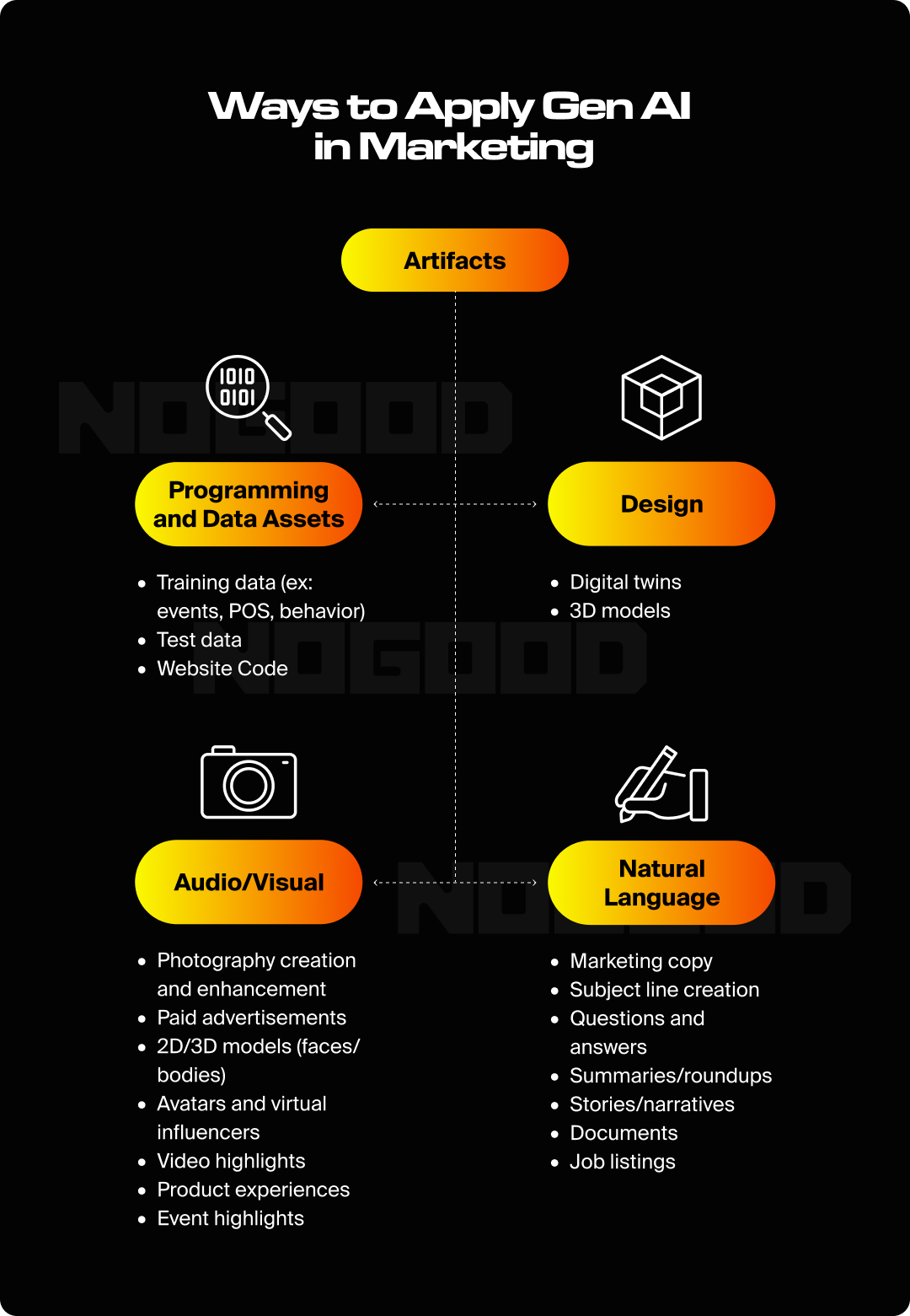
AI and machine learning (ML) are revolutionizing marketing and business operations by automating repetitive tasks, predicting market trends, and delivering personalized customer experiences at scale. These technologies are no longer optional but essential for organizations seeking to stay competitive. By processing vast amounts of data, AI/ML will empower businesses to derive actionable insights and enhance customer interactions like never before.
Key Predictions
1. AI-Driven Sentiment Analysis
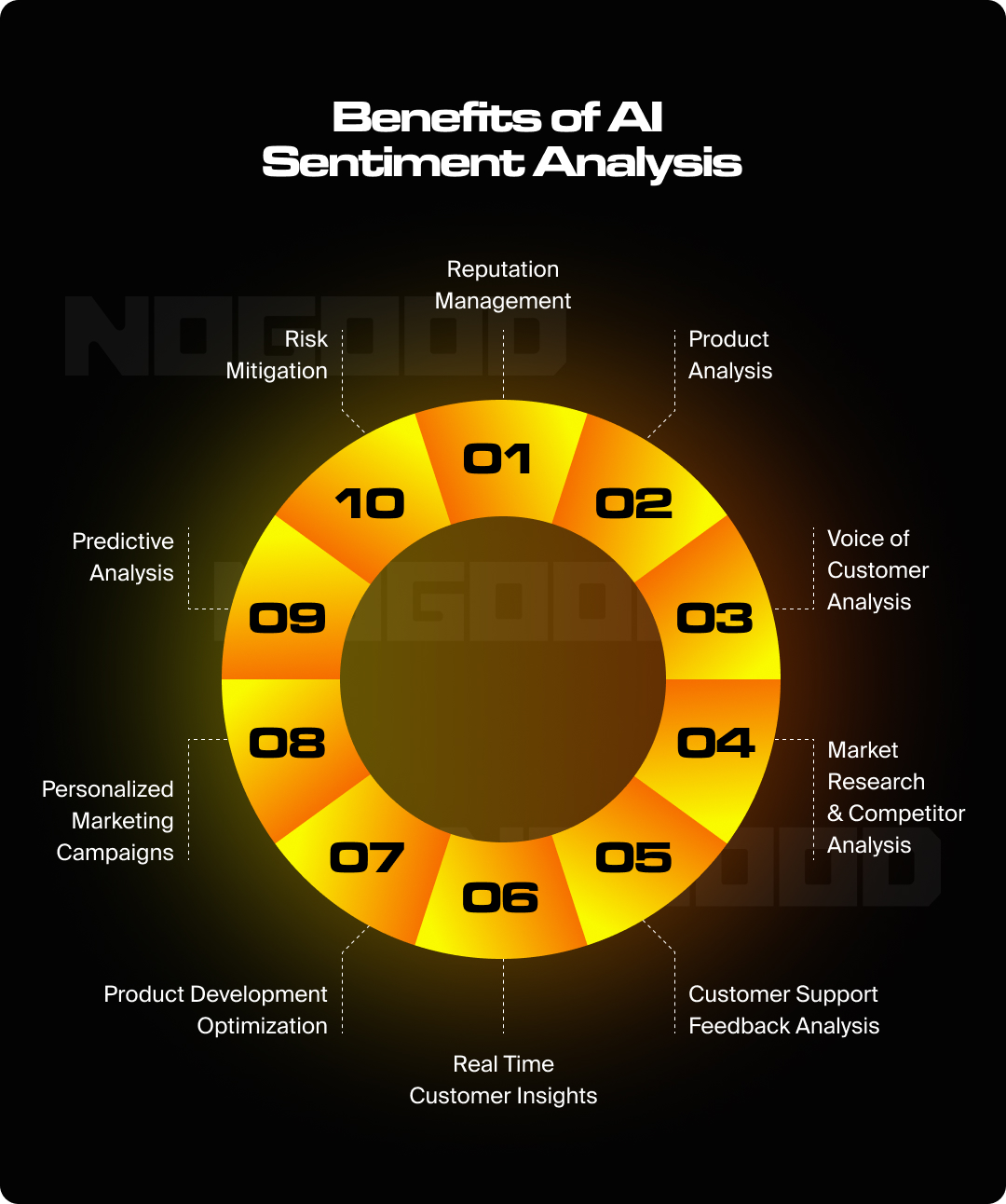
AI-driven sentiment analysis will transform customer experience by providing real-time insights into emotions and preferences from social media, reviews, and feedback. Tools like Goodie, for example, can parse audience sentiment about your brand through the responses to relevant queries from major LLMs.
Businesses will leverage these tools to anticipate customer needs, improve satisfaction rates by up to 50%, and enable hyper-personalized engagement. Adoption will expand across industries like healthcare and finance, with a growing focus on ethical, bias-free models to ensure accurate and trustworthy results.
2. Using Predictive Analytics
Traditional forecasting relied on historical data and assumptions. AI is going to fundamentally change this in the discovery of true cause-and-effect relationships in data for better predictions.
For instance, trends, social media, and weather can help retailers forecast demand so they can have the right products in stock without creating waste. The same ability for real-time analytics enables the company to act quickly on changing data by adjusting inventory accordingly, fine-tuning marketing effort, or even tailoring product offerings.
Actionable Advice
To harness these advancements:
- Adopt Cutting-Edge AI Platforms: From automated coding with OpenAI’s Codex to NLP with Hugging Face, the seamless integration of such technologies will drive predictive analytics, personalization, and real-time decision-making. These tools save time and resources spent on mundane tasks such as code generation, data cleaning, and text analysis, thus allowing increased customer intimacy and optimization of campaigns.
- Utilize Advanced, Real-Time Optimization Tools: With Pecan AI and H2O.ai, data can be analyzed to predict outcomes in real time and provide insights around customer behavior trends, key drivers of conversion, and the probable ROI of campaigns. These tools are unique in their ability to handle complex modeling automation, create faster actionable insights, and run dynamic campaign adaptations that unleash better performance than previously achieved by traditional methods.
Analytics capabilities will move to a whole new level for businesses, allowing for accurate data gathering, advanced predictive modeling, and real-time insight. These technologies improve analysis on complex data sets to surface actionable trends and drive better decision-making, resulting in quantifiable business outcomes.
2. Real-Time Analytics Will Drive Instant Decision-Making
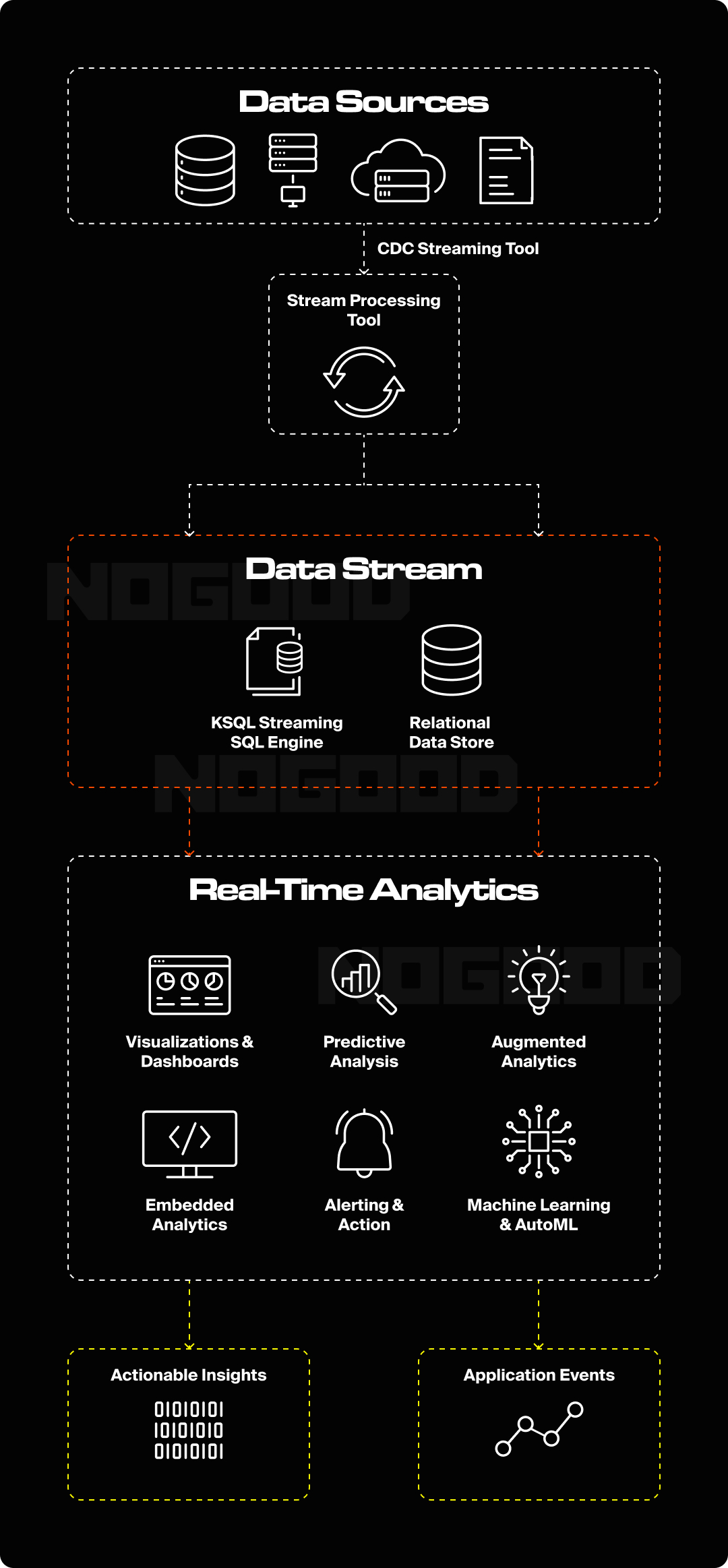
The era of static, historical data analysis is rapidly giving way to real-time insights, enabling marketers to act on live data streams. In 2025, businesses will depend on real-time analytics to adjust campaigns, improve customer experiences, and respond instantly to market changes.
In fact, research shows that 75% of businesses using AI-powered analytics experience direct revenue growth and 80% operational efficiency gains. Indeed, new breakthroughs in AI, cloud computing, and edge processing make real-time decision-making increasingly mainstream.
Key Predictions
1. Real-Time Decision-Making Tools Will Dominate
Marketers will zero in on platforms that provide AI-driven analytics combined with intuitive dashboards so that non-technical teams can make data-driven decisions in real time. According to one McKinsey report, companies that use high-level analytics are 19 times more likely to generate profitable results than those at the other end of this spectrum.
2. Edge Computing To Speed Up Data Processing
This brings latency down because, through the use of certain devices and sensors, the processing of data is much closer to the source. Besides, reduced latency empowers real-time decision-making and amplifies responsiveness. This allows for immediate personalization, precise geolocation targeting, and instantaneous feedback analysis that will lead to better customer experiences, operational efficiency, and faster time-to-market for data-driven strategies.
3. Personalization Will Evolve to Predictive Experiences
While real-time personalization has been the key focus in 2024, predictive personalization is going to be the next frontier. Brands will use advanced analytics and AI to not only respond dynamically but also anticipate customer needs before they arise.
Behavioral patterns, purchase history, and contextual data will let businesses proactively tailor experiences, offering products or solutions the customer hasn’t considered yet. This shift from reactionary to anticipatory strategies could push conversion rates even higher.
Actionable Advice
- Switch to Real-Time Analytics: Invest in tools like Analytics 360 or Segment that are designed to track customer interactions in real time. Such tools enable businesses to collect live data about user behavior and flawlessly connect it with marketing objectives, whether creating personalized campaigns or optimizing performance.
- Optimize Campaigns with Edge Computing: Apply edge computing solutions to geofencing, real-time content delivery, and in-app engagement. These technologies provide quicker responses and improved user experiences.
- Use AutoML for Adaptive Campaigns: BigQuery ML and H2O.ai are platforms on which marketers can automate campaign optimizations. The more the AutoML tools learn from new data, the better the targeting and budget allocation will become.
- Analyze Sentiment in Real Time with the Help of NLP Tools: Using tools such as Mention or Brandwatch can help you understand, in real-time, what people are saying about your brand on social media.
- Upskill Your Team: Make sure that your team is knowledgeable about using real-time analytics tools and dashboards, so they can understand and act on live insights with ease.
Real-time analytics are helping marketers fuel revenue growth, increase customer engagement, and stay ahead of major changes. Those who don’t adapt risk being left behind in a world where milliseconds can make all the difference.
3. Personalization Will Scale to New Heights
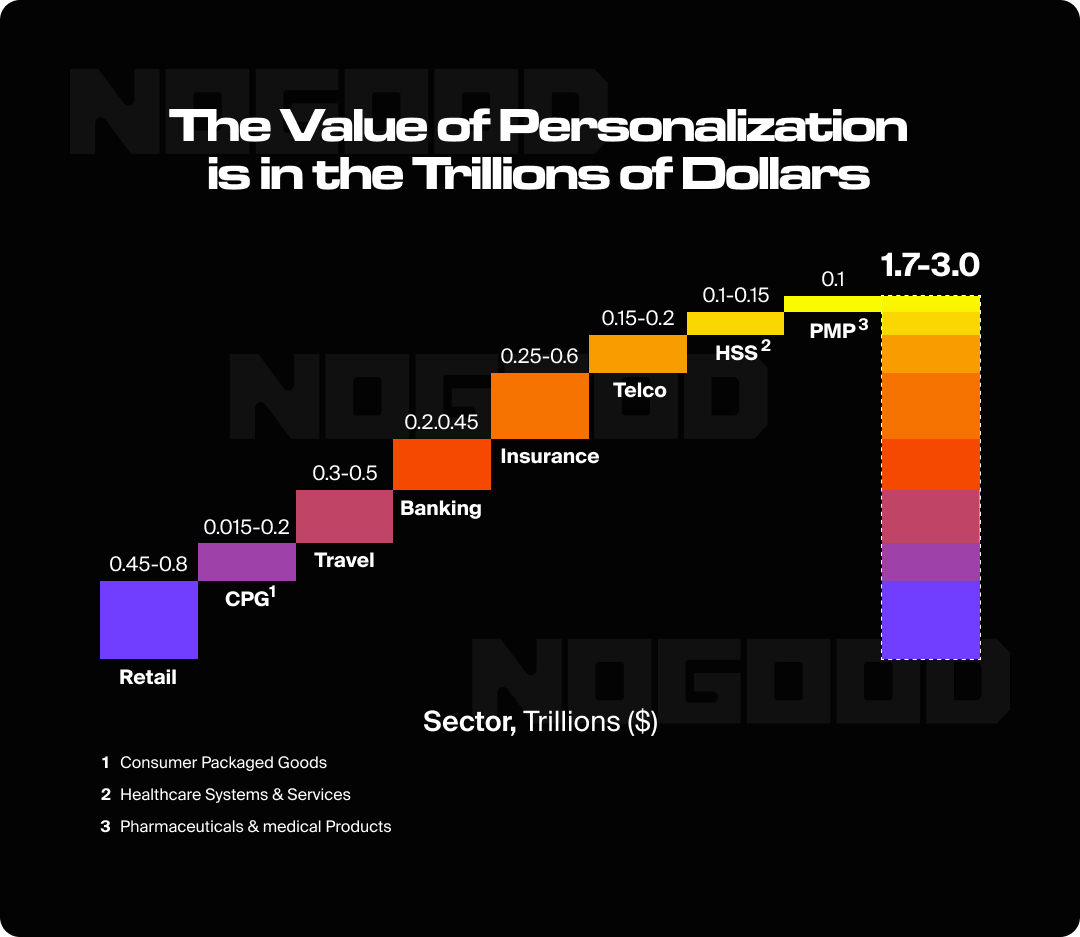
Personalization will be an element of hyper-relevance tailored to individual tastes and real-time delivery. Analytics is central in that transformation, allowing brands to gather, analyze, and act upon a vast pool of customer data.
McKinsey estimates that personalization at scale could unlock between $1.7 trillion and $3 trillion in business value, underlining how analytics can be used to design thoughtfully crafted customer journeys at every touchpoint. Advanced analytics is what makes personalization effective and scalable, from identifying preferences to optimization of real-time interactions.
Key Predictions
1. Behavioral Data Will Map Advanced Customer Journeys
Unified data integrates multi-source data into one logical view that enables brands to understand customer behaviors across each touchpoint. It will let brands use the combined behavioral, transactional, and demographic data, anticipate customer needs more accurately, and give them hyper-personal experiences in real-time.
This can potentially lift conversion rates by as much as 50%, while helping companies create smooth, data-based customer journeys that strike true with individual preferences.
2. The 4Ds of Personalization Will Drive Scalability
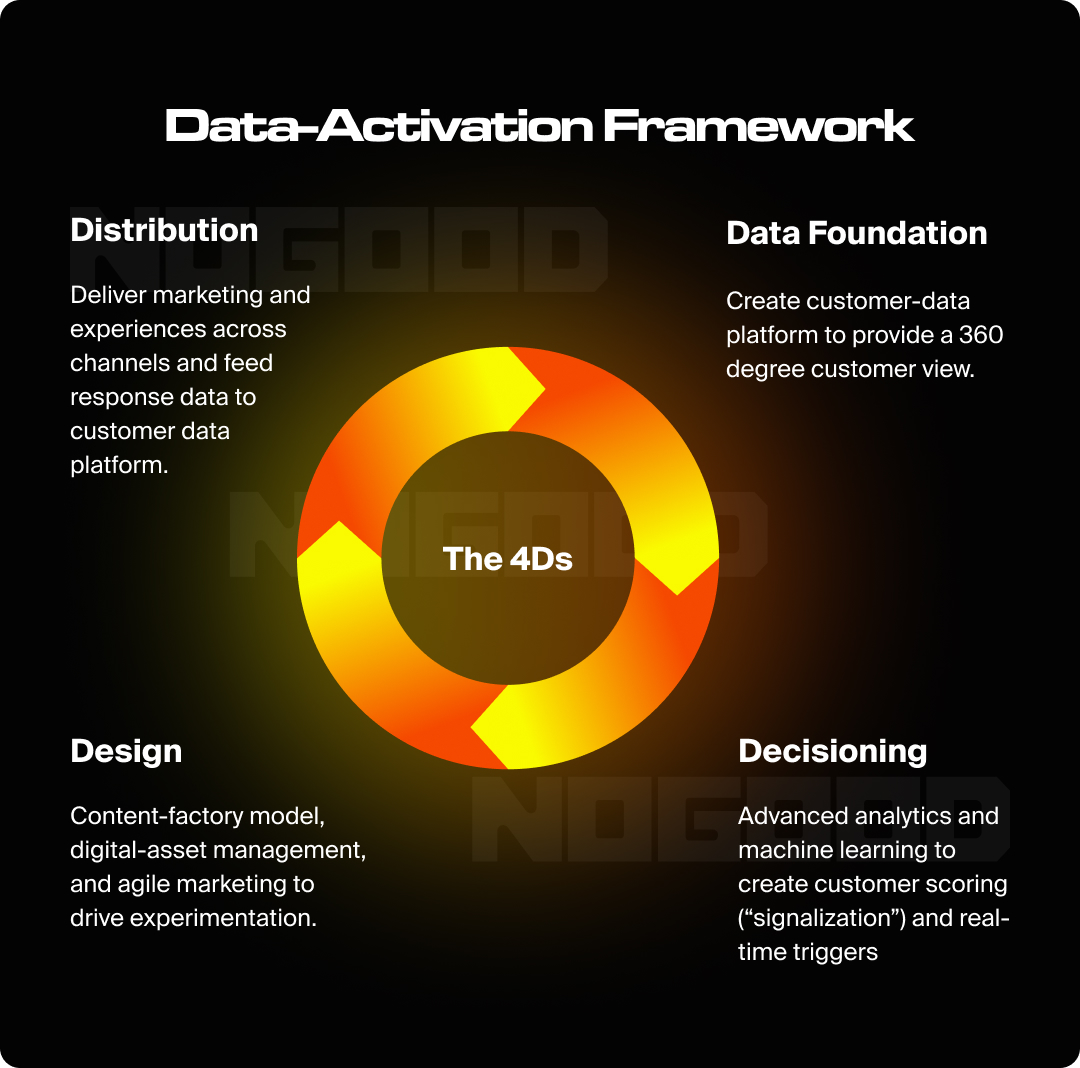
- Data: Centralize customer information with customer data platforms (CDPs) to ensure seamless activation.
- Decisioning: AI models will be used to forecast the best next actions.
- Design: Modular content systems will enable dynamic, hyperrelevant messaging.
- Distribution: With real-time orchestration comes consistency in experiences across the touchpoints.
3. AI-Powered Analytics and Dynamic Content Platforms Will Enable Scale
Tools like HubSpot and Marketo will automate the creation and delivery of content, making it possible for brands to create personalized experiences for millions of customers at the same time.
Actionable Advice
- Customer Data Centralization: Utilize omnichannel integration with the help of platforms such as Segment or Salesforce CDP for streamlined customer information.
- Leverage AI for Decisioning: Tools like Dynamic Yield predict what every customer will need next, thus making suggestions for the optimization of campaigns.
- Adopt Modular Content Systems: Create and deliver dynamic, personalized content using platforms like Adobe Experience Manager.
- Ensure Cross-Channel Integration: Braze is one of the tools that can allow for real-time, personalized communication across email, mobile, and web.
4. Privacy Will Be Prioritized
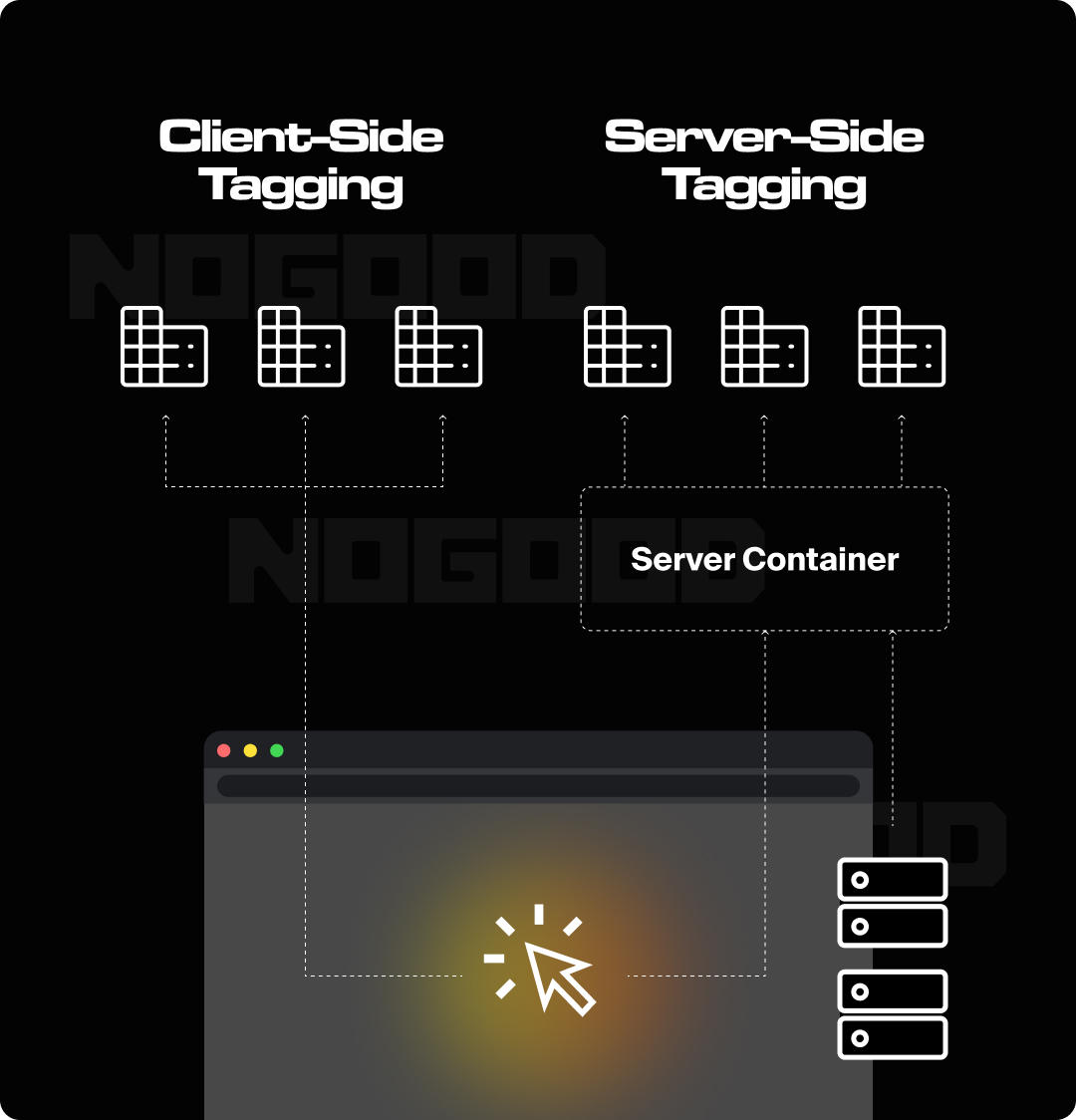
The landscape of data privacy is rapidly changing, and in 2025, there will be major regulatory changes that will directly impact data collection and analytics practices.
Upcoming Regulatory Changes:
- American Privacy Rights Act (APRA): Coming into effect in 2025, APRA is supposed to bring some harmony across the US in respect to data privacy, with severe consent mechanisms and a broader range of consumer rights. The penalties will go as high as 4% of the company’s revenue worldwide in cases of non-compliance.
- California Privacy Rights Act (CPRA): CPRA, or the California Privacy Rights Act, adds some new rules onto the preexisting CCPA. It will implement regulations with respect to cybersecurity audits and risk assessments, among many other policies.
These regulatory developments are driving an increasing need for more secure and compliant ways of collecting data. In this respect, server-side tracking is increasingly becoming the go-to solution, with increased security and better compliance with regulations on privacy.
Key Predictions
1. The Decline of Client-Side Tracking
The era of third-party cookies is coming to an end, with stricter browser policies and the rise of ad blockers. These changes will push businesses to transition from client-side tracking to server-side solutions, which offer more dependable data collection that’s unaffected by browser limitations or JavaScript issues.
2. A Rise in Server-Side Tagging Adoption
Tools like Google Tag Manager Server-Side are becoming essential, giving organizations greater control over how data is gathered, processed, and shared. These tools make it easier to comply with privacy regulations by offering enhanced security and governance.
3. The Integration of Privacy-Enhancing Technologies
Expect server-side tracking to work seamlessly with technologies such as confidential computing and differential privacy, helping organizations strike the perfect balance between robust analytics and strong data protection.
Actionable Advice
- Build Your Server-Side Infrastructure: Future-proof your analytics by investing in server-side tagging. This approach will ensure consistent, reliable data collection in a world where privacy is paramount.
- Prioritize Consent and Transparency: Integrate server-side tracking with consent management platforms to honor user preferences and meet the requirements of GDPR and CCPA.
- Focus on First-Party Data: Leverage server-side tracking alongside first-party data strategies to create a resilient, privacy-compliant foundation for your analytics efforts.
5. Emerging Technologies Will Be Integrated
Technologies like Augmented Reality (AR), Virtual Reality (VR), and voice interfaces transform how businesses interact with customers and analyze behavior. These innovations create new opportunities for engagement and provide advanced data that traditional analytics methods cannot capture.
With AR and VR enabling immersive environments and voice interfaces shifting how people search for information, businesses must adapt to stay competitive and maximize insights.
Key Predictions
1. AR and VR Analytics Revolutionizing Customer Insights
Technologies like augmented reality (AR) and virtual reality (VR) are evolving to track and analyze customer behavior in unprecedented detail. Businesses can leverage these tools to gain deeper insights into user preferences and interactions through metrics and features like:
- Heatmaps: Understand where users focus their attention in virtual environments, such as specific product displays in a virtual showroom.
- Dwell Time: Measure how long users engage with individual features, such as exploring a virtual product or interacting with augmented overlays.
- Virtual Pathing: Track users’ paths within a VR experience, helping identify which areas are most appealing or need optimization.
In our virtual showroom example, they could highlight the most engaging products based on user interaction frequency and time spent, enabling data-driven inventory and marketing strategies.
2. Voice Interfaces Redefining Analytics
The growing reliance on voice-activated devices like Alexa and Google Assistant is transforming how businesses analyze search behavior. Voice-specific analytics are becoming a critical part of understanding customer intent and improving engagement:
- Average Query Length: Track the often conversational and longer format of voice search queries compared to text-based search.
- Voice-to-Conversion Rates: Measure how effectively voice searches lead to desired outcomes, such as purchases or form completions.
- Intent-Focused Data: Analyze action-oriented voice queries that often reveal customer intent, e.g., “Where can I find sustainable shoes?”
Businesses can identify high-intent keywords by examining voice search data and tailor their content or ads to match the specific needs and contexts of voice search users.
3. Evolving Relevance of Existing Technologies
Traditional tools like HotJar and Google Analytics are becoming even more relevant by integrating new dimensions of data and adapting to AR and VR changes:
- Cross-Platform Heatmaps: These tools now track user behavior across websites and virtual environments, enabling businesses to compare traditional and immersive experiences.
- Enhanced Page Pathing: With new capabilities, pathing data can now include hybrid journeys that span websites, apps, and AR/VR platforms, providing a unified view of the customer journey.
- Greater Emphasis on Privacy: As analytics evolve, these platforms are focusing on maintaining user privacy while delivering actionable insights, especially with AR/VR and voice interfaces requiring sensitive data handling.
By 2025, businesses that integrate and adapt these tools to track customer behavior in virtual and voice-first environments will gain a significant competitive advantage.
Actionable Advice
- Run Pilot Campaigns for AR and VR: Design immersive experiences in measure customer engagement in virtual environments by tracking how long they engage, interaction frequency, and user preferences to identify what drives interest and sales. Use these insights, combined with traditional analytics, to refine your product offerings and marketing strategies.
- Integrate Conversational SEO for Voice Search: Optimize content for voice search by understanding natural language queries. Track trends (popular questions, high-intent keywords, etc.), conversions, and time on page to measure how effectively voice-optimized content and voice interactions lead to desired actions. Tailor content, refine ad campaigns, and align offerings with voice-driven customer intent.
- Combine AR, VR, and Voice Data with Traditional Analytics: Merge insights from emerging technologies with conventional data to build a unified view of customer behavior. Keep tabs on conversion rates, CTRs, and demographics to understand which customer segments are most engaged with new technologies. By combining data streams, companies make data-driven decisions to improve products, increase customer satisfaction, and drive growth.
Additional Applications of AR & VR Data
- Gaming: VR gaming platforms like Oculus track user movements and interactions to improve gameplay design and recommend personalized game content.
- Real Estate: Virtual tours powered by AR/VR allow potential buyers to explore properties remotely. Engagement analytics help agents identify high-interest properties and target their marketing.
- Healthcare: AR tools in telemedicine track dwell time on specific 3D medical visualizations. Insights guide enhancements in patient education materials, improving comprehension and engagement.
6. Data Analysis and Sharing Are Evolving
The commoditization of data is changing how marketing strategies are developed and executed. With data now more accessible than ever, businesses must focus on harnessing and leveraging it for better decision-making, customer personalization, and competitive advantage. The real challenge lies not in acquiring data but in ensuring its quality and effectively turning it into actionable insights.
Key Predictions
1. Data Marketplaces Will Expand
Data marketplaces will become more widespread, allowing businesses to buy, sell, and share valuable datasets. This opens up new opportunities for revenue streams and will enable marketers to tap into external datasets that can enhance their targeting, segmentation, and forecasting.
Example: A clothing retailer could purchase data from a fashion insights marketplace to predict consumer trends and adjust product offerings accordingly.
2. Data Quality Will Be More Valuable Than Model Improvements
As the volume of data increases, the emphasis will shift toward ensuring data accuracy and consistency. Businesses with clean, reliable datasets will outperform those investing solely in advanced data models or AI.
Example: A company prioritizing data validation and cleaning will achieve more accurate customer insights, leading to more effective marketing campaigns and better customer engagement.
Actionable Advice
- Form Strategic Partnerships with Data Vendors: Partnering with reliable data vendors will help businesses access high-quality datasets that are relevant and aligned with their marketing goals. This can lead to more precise audience targeting, improved personalization, and deeper insights. A restaurant chain, for example, could partner with a local delivery service to obtain data on dining preferences and delivery habits to better tailor promotions.
- Invest in Data Quality: Businesses must prioritize the cleanliness of their data by establishing processes for data cleaning and validation. Reliable, well-maintained data will drive better decision-making and campaign performance. Implement tools to detect and correct duplicate records, missing values, and outliers to enhance the accuracy of customer profiles and improve segmentation.
- Integrate External and Internal Data for a Holistic View: Companies should combine internal data sources (like CRM or website data) with external datasets from data marketplaces or vendors to fully capitalize on available data. This integrated approach offers a more comprehensive view of customers and enhances forecasting, personalization, and targeting efforts. For example, combining social media data with customer purchase behavior can allow businesses to predict future product demand and optimize ad campaigns.
By focusing on data quality and integrating external datasets, businesses can ensure their marketing efforts are based on solid insights, leading to better outcomes across key performance metrics.
7. Video & Interactive Content Play a Key Role in Data Acquisition and Analytics
Video and interactive content aren’t just tools for engagement; they’re becoming critical data sources for understanding audience behavior and preferences.
Key Predictions
1. Short-Form and Live Video Formats Will Dominate
Platforms like TikTok, Instagram Reels, and YouTube Shorts will drive user interaction, creating opportunities to gather data on preferences, viewing habits, and engagement triggers.
Live videos will offer real-time data on audience participation, comments, and reactions, enabling businesses to measure interest and adjust strategies dynamically.
2. Data-Driven Video Personalization Will Redefine Engagement
Analytics tools will track user behavior — such as watch time, drop-off points, and clicks on CTAs — allowing businesses to create hyper-personalized video experiences.
Insights from video engagement will inform broader marketing strategies, like segmentation and targeted messaging.
Actionable Advice
- Invest in Data-Driven Tools: Use platforms like Vimeo or HubSpot Video to integrate video metrics directly into your analytics dashboard. Adopt AI-powered tools as well, such as Synthesia, to create personalized video content at scale based on behavioral data.
- Be Intentional with the Data You Collect: Consider tracking behavioral metrics (watch time, drop-off rates, and engagement patterns), CTA performance (clicks, sign ups, purchases), and content preferences to understand what content resonates and has a direct impact on conversion rates.
- Combine Video Data with Data from Other Sources: Integrate video metrics with CRM data to identify correlations between video engagement and customer lifetime value (CLV). Match video consumption data with demographic or psychographic profiles from Google Analytics or social media platforms to refine audience segmentation.
- Focus on Specific Insights for Personalization: Track engagement by audience segments (e.g., new versus returning viewers) to adjust content for different stages of the funnel. Use location-based data from video interactions to offer region-specific promotions or messaging.
- Build Systems for Continuous Improvement: Test variations of videos (length, format, or narrative style) to identify what drives the best results. Use audience polls, surveys, or comment analysis during live videos to capture qualitative data, enriching the quantitative metrics.
By strategically collecting and analyzing these data points, brands can maximize the value of video content and use it as a cornerstone for data-driven growth.
Marketing Analytics Trends for 2025: Final Thoughts
Marketers must adapt to these emerging trends to stay competitive and drive better engagement and ROI. From leveraging AI and real-time analytics to focusing on personalized, privacy-first strategies, these trends are reshaping how businesses connect with customers. Integrating technologies like AR/VR and voice search further transforms how marketers interact with their audience, while organizations will need to reevaluate how they clean, analyze, and share data.
The future of marketing analytics is here. By embracing these trends, marketers can unlock deeper insights to power informed decision-making and positively impact the customer experience.
We’d love to hear your thoughts on these trends! How are you planning to integrate them into your marketing strategy for 2025? Share your insights or ask questions in the comments below.







